Mitsubishi Space Star vs SEAT Ibiza – Differences & prices compared
Compare performance, boot space, consumption and price in one view.
Find out now: which car is the better choice for you – Mitsubishi Space Star or SEAT Ibiza?
The Mitsubishi Space Star (Hatchback) comes with a Petrol engine and Manuel or Automatic transmission. In comparison, the SEAT Ibiza (Hatchback) features a Petrol engine with Manuel or Automatic transmission.
When it comes to boot capacity, the Mitsubishi Space Star offers 235 L, while the SEAT Ibiza provides 355 L – depending on how much space you need. If you’re looking for more power, decide whether the 71 HP of the Mitsubishi Space Star or the 150 HP of the SEAT Ibiza suits your needs better.
In terms of consumption, the values are 4.90 L per 100 km for the Mitsubishi Space Star, and 5.20 L for the SEAT Ibiza.
Price-wise, the Mitsubishi Space Star starts at 11600 £, while the SEAT Ibiza is available from 16100 £. Compare all the details and find out which model fits your lifestyle best!
In the competitive subcompact segment, the Mitsubishi Space Star faces off against the SEAT Ibiza, showcasing distinct strengths. While the Space Star boasts impressive fuel efficiency and a practical interior, the Ibiza offers a sportier design and a more engaging driving experience. Ultimately, the choice between these two models comes down to personal preference and the specific needs of the driver.
Mitsubishi Space Star
The Mitsubishi Space Star offers a compact yet surprisingly spacious experience, making it an ideal choice for urban dwellers who need agility and comfort. Its sleek design is complemented by a range of vibrant colour options, adding a touch of flair to everyday commutes. With a focus on efficiency and practicality, the Space Star combines a user-friendly interface with modern technology to ensure a smooth driving experience.
details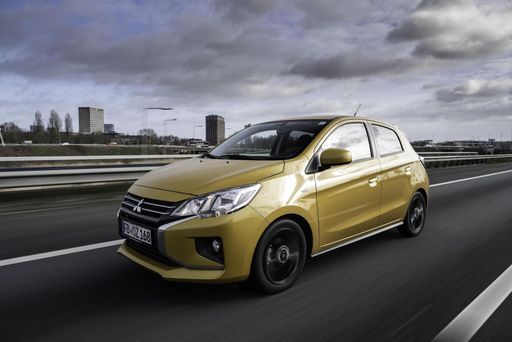 @ presse.mitsubishi-motors.de
@ presse.mitsubishi-motors.de
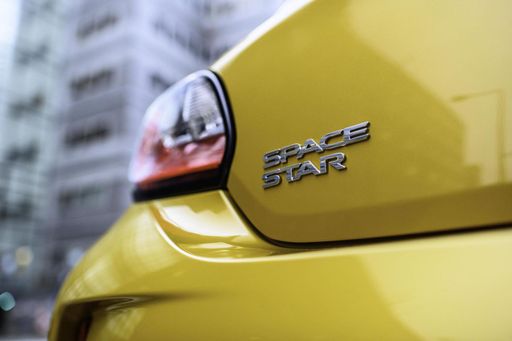 @ presse.mitsubishi-motors.de
@ presse.mitsubishi-motors.de
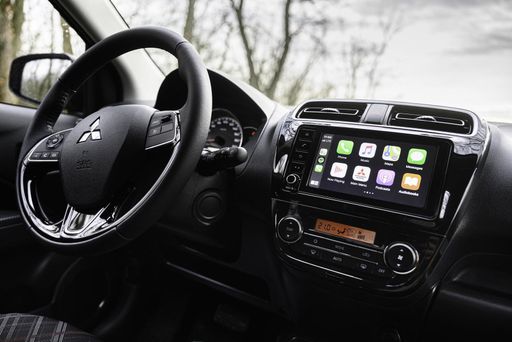 @ presse.mitsubishi-motors.de
@ presse.mitsubishi-motors.de
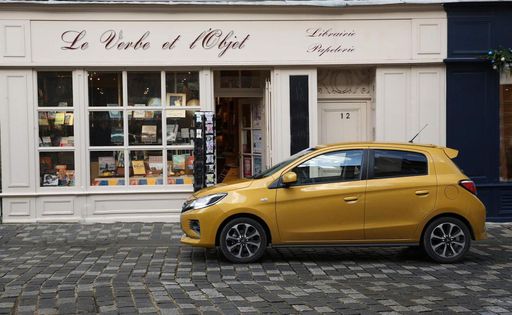 @ presse.mitsubishi-motors.de
@ presse.mitsubishi-motors.de
SEAT Ibiza
The SEAT Ibiza stands out as a dynamic and stylish hatchback tailored for those who appreciate a lively driving experience. Its sleek design is complemented by a comfortable and modern interior, making it a standout choice in the city. Advanced technology ensures safety and connectivity, offering a well-rounded package for both new and seasoned drivers.
details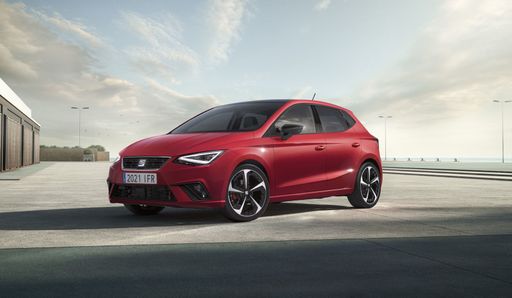 @ seat-mediacenter.de
@ seat-mediacenter.de
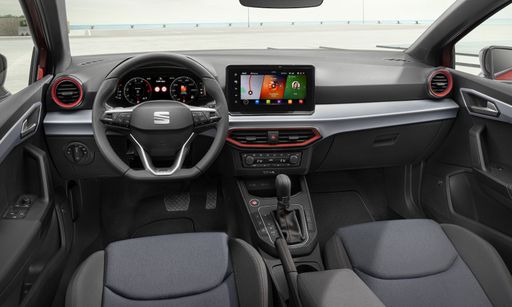 @ seat-mediacenter.de
@ seat-mediacenter.de
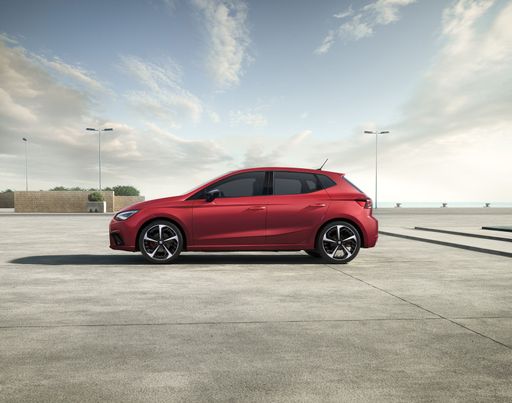 @ seat-mediacenter.de
@ seat-mediacenter.de
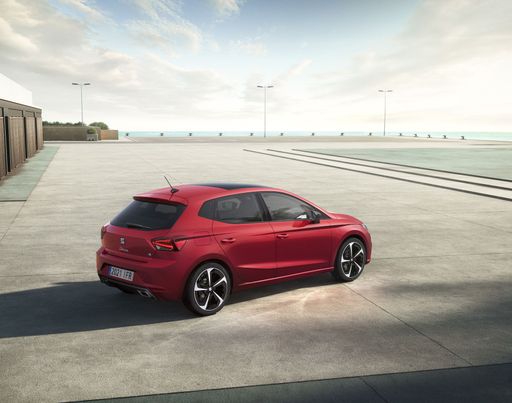 @ seat-mediacenter.de
@ seat-mediacenter.de
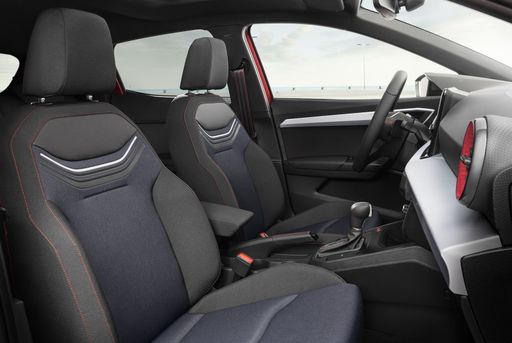 @ seat-mediacenter.de
@ seat-mediacenter.de
Mitsubishi Space Star vs SEAT Ibiza: A Comprehensive Comparison
The automotive market is ever-evolving, with manufacturers constantly striving to innovate and improve their offerings. In the compact hatchback segment, the Mitsubishi Space Star and the SEAT Ibiza stand out as popular choices among consumers. This article delves into a detailed comparison of these two models, analyzing their technical aspects, innovations, and overall performance.
Technical Specifications Overview
The Mitsubishi Space Star is equipped with a 1.2-liter three-cylinder petrol engine, generating a modest output of 71 HP and a torque of 102 Nm. It offers manual and CVT transmission options, contributing to a smooth driving experience. The model's fuel consumption ranges from 4.9 L/100km to 5.5 L/100km, showcasing impressive efficiency for a compact car.
In contrast, the SEAT Ibiza features a broader engine lineup, ranging from a 1.0-liter three-cylinder to a more powerful 1.5-liter four-cylinder engine. The Ibiza's power output varies significantly, reaching up to 150 HP with a torque of 250 Nm in its higher variants. With a fuel consumption ranging from 5.1 L/100km to 5.7 L/100km, the Ibiza also maintains competitive efficiency.
Performance Comparison
Acceleration is a key performance indicator for many drivers. The Space Star accelerates from 0-100 km/h in 14.1 seconds, while the Ibiza boasts various configurations, with the quickest variant achieving this in just 8.1 seconds. This significant difference highlights the Ibiza's sporty edge in terms of performance.
When it comes to top speed, the Space Star reaches a maximum of 167 km/h, whereas the Ibiza offers a top speed that can go up to 216 km/h in its most potent models. Thus, for those seeking a spirited drive, the Ibiza certainly has the advantage.
Dimensions and Practicality
In terms of size, the Mitsubishi Space Star measures 3845 mm in length, 1665 mm in width, and 1505 mm in height. It features a compact trunk space of 235 liters, which is adequate but may feel limited for some. The interior can comfortably seat five passengers, making it suitable for urban commutes.
On the other hand, the SEAT Ibiza is larger, measuring 4059 mm long and 1780 mm wide with a height of 1447 mm. The Ibiza also outdoes the Space Star with a trunk capacity of 355 liters, providing more room for luggage or shopping trips. Both models can seat five, but the Ibiza offers additional legroom, enhancing passenger comfort.
Fuel Efficiency and Environmental Impact
Fuel efficiency is a crucial aspect for consumers today. The Space Star showcases an impressive CO2 emission range of 112 to 125 g/km, which positions it favorably in terms of environmental impact. The Ibiza, however, presents a competitive CO2 range of 115 to 128 g/km, reflecting its balance of performance and efficiency.
Innovative Features and Technology
Both models incorporate modern technology; the Mitsubishi Space Star includes a user-friendly infotainment system and essential safety features. However, it may lack some advanced tech found in its peers. In contrast, the SEAT Ibiza excels with its highly modernized cockpit and advanced safety options, including adaptive cruise control and lane assist, making it a tech-savvy choice for drivers.
Conclusion: Which Hatchback Reigns Supreme?
In conclusion, the Mitsubishi Space Star offers a reliable and economical option for those prioritizing functionality and efficiency. Its compact size makes it ideal for city driving, albeit with limited power and advanced technology features. Meanwhile, the SEAT Ibiza caters to a broader audience, providing a more dynamic driving experience, excellent performance, and superior technological innovations.
Your choice between these two hatchbacks ultimately hinges on your specific needs and preferences—whether that's a fuel-efficient daily driver or a more powerful and tech-laden vehicle that excels on the road.

|

|
|
|
|
Costs and Consumption |
|
|---|---|
|
Price
11600 - 18700 £
|
Price
16100 - 28000 £
|
|
Consumption L/100km
4.9 - 5.5 L
|
Consumption L/100km
5.2 - 5.7 L
|
|
Consumption kWh/100km
-
|
Consumption kWh/100km
-
|
|
Electric Range
-
|
Electric Range
-
|
|
Battery Capacity
-
|
Battery Capacity
-
|
|
co2
112 - 125 g/km
|
co2
117 - 128 g/km
|
|
Fuel tank capacity
35 L
|
Fuel tank capacity
40 L
|
Dimensions and Body |
|
|---|---|
|
Body Type
Hatchback
|
Body Type
Hatchback
|
|
Seats
5
|
Seats
5
|
|
Doors
5
|
Doors
5
|
|
Curb weight
940 - 1009 kg
|
Curb weight
1111 - 1231 kg
|
|
Trunk capacity
209 - 235 L
|
Trunk capacity
355 L
|
|
Length
3845 mm
|
Length
4059 mm
|
|
Width
1665 mm
|
Width
1780 mm
|
|
Height
1505 mm
|
Height
1447 mm
|
|
Payload
360 - 400 kg
|
Payload
489 - 522 kg
|
Engine and Performance |
|
|---|---|
|
Engine Type
Petrol
|
Engine Type
Petrol
|
|
Transmission
Manuel, Automatic
|
Transmission
Manuel, Automatic
|
|
Transmission Detail
Manual Gearbox
|
Transmission Detail
Manual Gearbox, Dual-Clutch Automatic
|
|
Drive Type
Front-Wheel Drive
|
Drive Type
Front-Wheel Drive
|
|
Power HP
71 HP
|
Power HP
80 - 150 HP
|
|
Acceleration 0-100km/h
14.1 - 15.8 s
|
Acceleration 0-100km/h
8.1 - 15.3 s
|
|
Max Speed
163 - 167 km/h
|
Max Speed
172 - 216 km/h
|
|
Torque
102 Nm
|
Torque
95 - 250 Nm
|
|
Number of Cylinders
3
|
Number of Cylinders
3 - 4
|
|
Power kW
52 kW
|
Power kW
59 - 110 kW
|
|
Engine capacity
1193 cm3
|
Engine capacity
999 - 1498 cm3
|
General |
|
|---|---|
|
Model Year
2020 - 2022
|
Model Year
2025
|
|
CO2 Efficiency Class
C, D
|
CO2 Efficiency Class
D
|
|
Brand
Mitsubishi
|
Brand
SEAT
|
Mitsubishi Space Star
Introducing the Mitsubishi Space Star: A Perfect Blend of Efficiency and Innovation
The Mitsubishi Space Star continues to impress urban drivers with its compact yet efficient design. Celebrated for its practicality and fuel economy, this hatchback offers a unique blend of new-age technology and reliable performance. Let’s dive into some of the technical details and innovations that make the Space Star a popular choice among compact car enthusiasts.
Engine and Performance
The Space Star is powered by a 1.2-litre, 3-cylinder petrol engine, delivering a respectable 71 PS (52 kW). The engine provides a harmonious balance of power and efficiency, reaching a top speed of up to 167 km/h. With a torque of 102 Nm, drivers can expect smooth city rides and decent highway cruising capabilities. The Space Star's economy ranges from 4.9 to 5.5 litres per 100 kilometres, ensuring that your journeys remain budget-friendly and environmentally considerate.
Transmission and Driving Dynamics
When it comes to the driving experience, buyers have the option of a 5-speed manual transmission or a CVT automatic. This flexibility allows for a more personalised driving experience, whether you prefer the engagement of manual shifting or the convenience of an automatic gearbox. The car's front-wheel-drive setup further enhances its maneuverability, making it an ideal companion for navigating tight city streets.
Design and Dimensions
The Mitsubishi Space Star is designed to turn heads with its sleek, aerodynamic lines while maintaining a practical size. Measuring 3845 mm in length, 1665 mm in width, and 1505 mm in height, it's a perfect fit for urban driving. Despite its compact form, the Space Star offers five seats and five doors, providing ample accessibility and comfort for both the driver and passengers.
Interior Features and Comfort
Inside, the Space Star prioritises comfort and convenience with thoughtfully designed interiors. The luggage space ranges from 209 to 235 litres, ideal for shopping trips or weekend getaways. The vehicle comes in a variety of trim levels, including Basis, Plus, Select, and Top, with each offering distinct features to meet different customer needs. Whether you need basic amenities or more premium touches, the Space Star has a version that will suit your lifestyle.
Safety and Environmental Impact
Safety innovation is a hallmark of the Mitsubishi Space Star, ensuring peace of mind for drivers and passengers alike. Its CO2 efficiency class ranges from C to D, with emissions between 112 to 125 g/km, reflecting its dedication to reducing the environmental footprint. These features contribute to making the Space Star a responsible choice for the eco-conscious driver.
Cost of Ownership
Affordability is another attractive aspect of the Space Star. Prices range from €13,590 to €21,790, making it accessible for a wide array of budgets. Running costs are equally competitive, with monthly expenses estimated between €627 and €767, and cost per kilometre ranging from 25.1 to 30.7 cents, all contributing to a car that is as economical to own as it is to drive.
Conclusion
In summary, the Mitsubishi Space Star offers a compelling package of efficiency, practicality, and modern technology. Its combination of fuel economy, flexible transmission options, and affordability make it a standout choice in the compact car segment. For those looking for a reliable and economical city car, the Space Star remains a strong contender that shouldn't be overlooked.
SEAT Ibiza
Unveiling the SEAT Ibiza: A Compact Powerhouse
The SEAT Ibiza has long been a staple in the world of compact hatchbacks, and its 2024 model continues to solidify its reputation for balancing style, performance, and practicality. As a model that embodies SEAT's commitment to innovation and driving pleasure, the Ibiza combines impressive engineering with modern flair.
Performance and Efficiency
Under the bonnet of the SEAT Ibiza lies a choice of engines that cater to diverse driving preferences. The entry-level options feature a 1.0 TSI petrol engine, available in variants with 95 PS or 115 PS, offering a sprightly performance for city driving. For those seeking more power, the 1.5 TSI petrol engine provides a robust 150 PS, ensuring a dynamic ride whether on urban roads or the open highway.
All models boast front-wheel-drive configurations and are available with either a manual or automatic transmission, the latter featuring a smooth-shifting dual-clutch system. The Ibiza's fuel efficiency ranges between 5.1 to 5.7 L/100 km, making it an economical choice for budget-conscious drivers who don't want to compromise on performance.
Innovative Features and Technology
Incorporating advanced technology, the SEAT Ibiza enhances the driving experience with a host of modern features. The digital cockpit, tailored to the driver's needs, offers intuitive controls and connectivity. A touch-screen infotainment system provides seamless access to navigation, entertainment, and smartphone integration via Apple CarPlay and Android Auto.
Safety is a priority in the Ibiza, with features such as adaptive cruise control, lane assist, and autonomous emergency braking, ensuring peace of mind on every journey. The Ibiza's engineering excellence also delivers an agile driving experience, courtesy of its precise steering and responsive handling.
Design and Comfort
The exterior design of the SEAT Ibiza is both dynamic and elegant, showcasing sculpted lines and a bold front grille that captures attention. Its compact dimensions, measuring 4059 mm in length, make it perfect for navigating tight city streets while still offering generous interior space.
Inside, the Ibiza comfortably seats five passengers and offers a versatile 355-litre boot space, accommodating the demands of everyday life. Quality materials and ergonomic seating ensure comfort on long drives, while the cabin's refined ambience is boosted by optional upgrades such as sportier trims and enhanced upholstery.
Value and Versatility
With a price range from €19,470 to €31,055, the SEAT Ibiza provides excellent value for money. Its cost-conscious nature extends beyond the sticker price, with running costs calculated between 28.8 to 37.7 cents per kilometre. The Ibiza's adaptability is further enhanced by a selection of trims, including the sporty FR editions and the more luxurious Xcellence trims, allowing buyers to tailor the car to their personal style.
Conclusion
The SEAT Ibiza continues to shine as a versatile and stylish hatchback, offering a perfect blend of performance, technology, and value. Ideal for those seeking a compact car that doesn't compromise on features or driving enjoyment, the Ibiza is a testament to SEAT's innovative approach in the automotive market.
Which drive types are available for the Mitsubishi Space Star?
Available as Front-Wheel Drive.
The prices and data displayed are estimates based on German list prices and may vary by country. This information is not legally binding.
